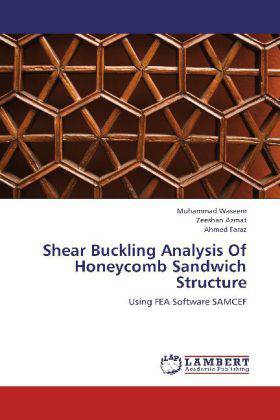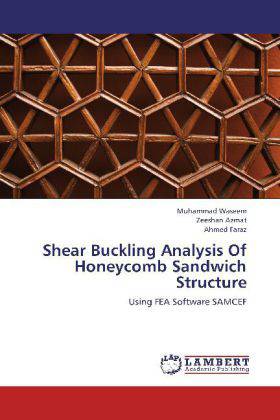
- Afhalen na 1 uur in een winkel met voorraad
- Gratis thuislevering in België vanaf € 30
- Ruim aanbod met 7 miljoen producten
- Afhalen na 1 uur in een winkel met voorraad
- Gratis thuislevering in België vanaf € 30
- Ruim aanbod met 7 miljoen producten
Zoeken
Shear Buckling Analysis of Honeycomb Sandwich Structure
Using FEA Software SAMCEF
Muhammad Waseem, Zeeshan Azmat, Ahmed Faraz
Paperback | Engels
€ 58,45
+ 116 punten
Omschrijving
Lighter and stiffer structural construction is required for space rockets than those used in aviation. A reduction of only 1 Kg in the weight of a rocket intended for a flight to Mars and back results in saving 2 tons of propellant. At present, sandwich technology is extensively used in Aeronautics and Aerospace fields. Sandwich panels with thin composite face sheets are used due to their ability to produce structures with high stiffness to weight and strength to weight ratios. In this research, Finite Element (FE) model is generated for a particular test configuration of honeycomb sandwich structure with metallic (Aluminium) skins. In this modelling effort, the specimen is modelled in such a way to simulate and analyze in a true sense. Stability and non linear analysis is carried out using FEA software SAMCEF. With geometric and material nonlinearity, the results are then compared with the experimental ones. Force displacement curves acquired from FEA and 3point bending test seem good enough for comparison.
Specificaties
Betrokkenen
- Auteur(s):
- Uitgeverij:
Inhoud
- Aantal bladzijden:
- 140
- Taal:
- Engels
Eigenschappen
- Productcode (EAN):
- 9783838360836
- Verschijningsdatum:
- 26/04/2010
- Uitvoering:
- Paperback
- Formaat:
- Trade paperback (VS)
- Afmetingen:
- 152 mm x 229 mm
- Gewicht:
- 213 g

Alleen bij Standaard Boekhandel
+ 116 punten op je klantenkaart van Standaard Boekhandel
Beoordelingen
We publiceren alleen reviews die voldoen aan de voorwaarden voor reviews. Bekijk onze voorwaarden voor reviews.











